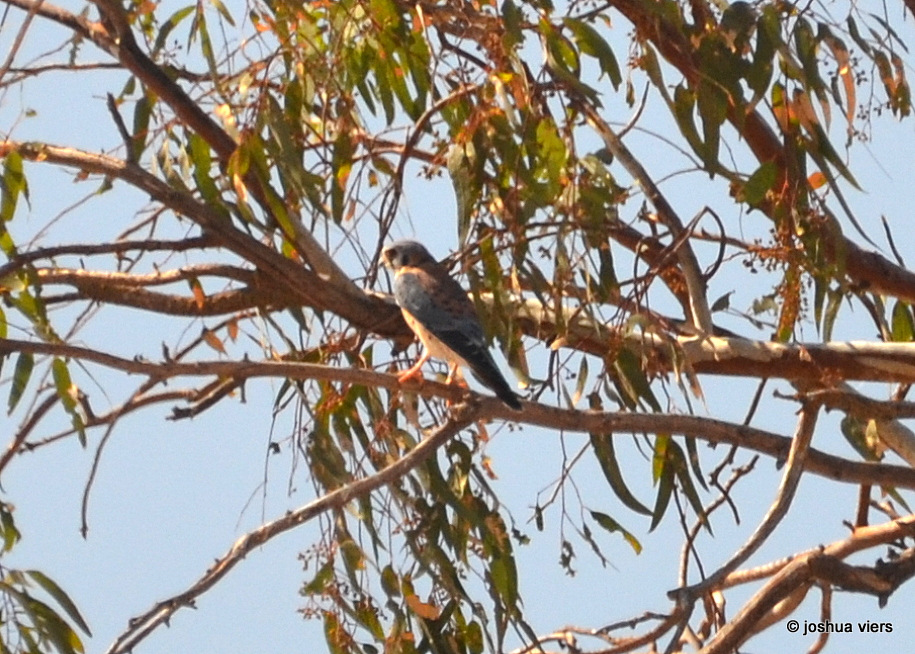
Harriers take smaller prey. They fly low across the Reserve, often skimming just inches above the grass. By hunting in this “surprise and grab” mode, they hope to startle a mouse, lark or sparrow that is not paying attention to its surroundings. A split second of inattention means the Harrier has a meal. Extra long legs enable the harrier to reach quickly and deeply into the grass to grasp its prey.
American Kestrels are small falcons with a specialized diet – they love grasshoppers. Big ones. These common falcons have two methods for searching for prey. They’ll hover hunt 30 to 50 ft. up, staying in one place on fast beating wings. This enables them to seek prey in open fields, far from a perch. The other method – “sit and wait” - is something you probably see daily while driving in Merced. Kestrels are a common sight as they sit atop a utility pole or grasping an electrical wire. From this perch they scan the ground for an insect or small mouse. Perching is used more often and conserves energy, whereas hovering is used more when it is breezy, there are rising thermals, or when perches are lacking. Hovering requires a lot more effort than perching, so it is used less commonly.

Prairie Falcons liven up the Reserve. A bullet of a bird, as they swoop low and fast across the hills. They feed mostly on birds, and on the Reserve flocks of 100s of tasty Horned Larks are just what this falcon needs. A sure sign that there’s a Prairie Falcon in the neighborhood is a dense, circling flock of larks. The larks react to an aerial predator by forming a tightly-packed flock in which each flock member strives to get into the center. The center means safety, as the falcon concentrates on picking off a single bird on the periphery. As the flock wheels and turns in the sky, the shape of this mass of birds flows and changes in remarkable and beautiful ways. If the falcon is lucky – and often they aren’t – they can work the flock until one bird becomes separated from its flock mates. This one then becomes the target. A Horned Lark in the headlights is no match for a lightening fast falcon.
Bald Eagles mostly transit the Reserve en route from Bear Creek to Lake Yosemite. They typically take fish and waterfowl, be they dead or alive. On Friday a class of conservation biology students witnessed a once-in-a-lifetime sighting at Lake Yosemite. We watched a pair of adult Bald Eagles attack and injure an immature California Gull. The adults repeatedly hit the gull, raking it with their talons. The stunned gull was unable to fly and floated in a dazed state on the water. Then, as we watched through a spotting scope, two immature Bald Eagles (certainly siblings and offspring of the adults) appeared. They flew over the gull, but not with the same serious intention as that of the adults. However, after several failed attempts that appeared tentative to us, the youngsters managed to grab and drag the gull to shore, where they stood over it and began eating. What we had observed were parents teaching their children how to capture prey. An incredible sight and one which many naturalists don’t witness in a lifetime of bird watching!
Next time you’re walking along the east side of campus, gaze to the east and look up. There’s sure to be a raptor somewhere in your line of sight.
To learn more about winter raptors and the new Reserve, join us on February 21 (3 to 5 pm) when a hike across the Reserve


